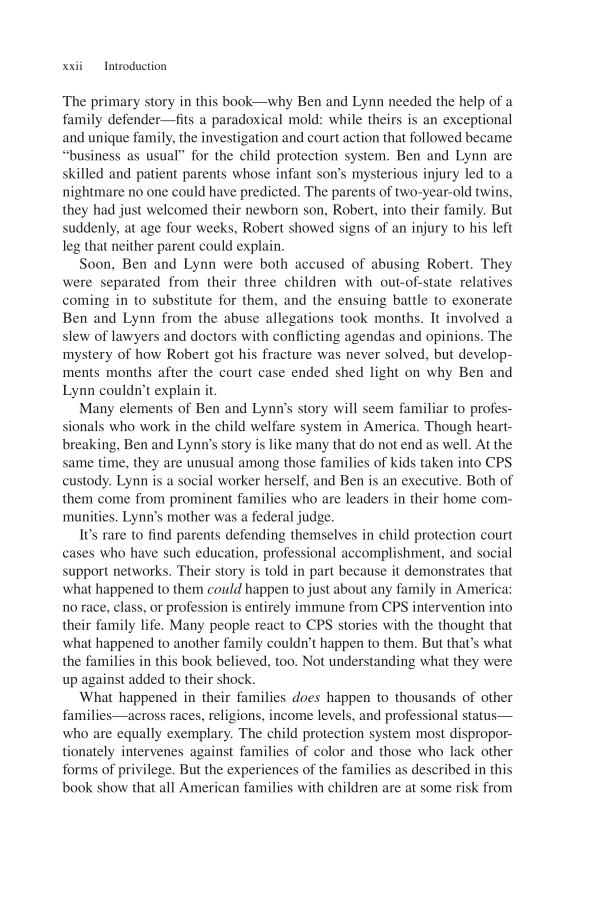xxii Introduction The primary story in this book—why Ben and Lynn needed the help of a family defender—fits a paradoxical mold: while theirs is an exceptional and unique family, the investigation and court action that followed became “business as usual” for the child protection system. Ben and Lynn are skilled and patient parents whose infant son’s mysterious injury led to a nightmare no one could have predicted. The parents of two-year-old twins, they had just welcomed their newborn son, Robert, into their family. But suddenly, at age four weeks, Robert showed signs of an injury to his left leg that neither parent could explain. Soon, Ben and Lynn were both accused of abusing Robert. They were separated from their three children with out-of-state relatives coming in to substitute for them, and the ensuing battle to exonerate Ben and Lynn from the abuse allegations took months. It involved a slew of lawyers and doctors with conflicting agendas and opinions. The mystery of how Robert got his fracture was never solved, but develop- ments months after the court case ended shed light on why Ben and Lynn couldn’t explain it. Many elements of Ben and Lynn’s story will seem familiar to profes- sionals who work in the child welfare system in America. Though heart- breaking, Ben and Lynn’s story is like many that do not end as well. At the same time, they are unusual among those families of kids taken into CPS custody. Lynn is a social worker herself, and Ben is an executive. Both of them come from prominent families who are leaders in their home com- munities. Lynn’s mother was a federal judge. It’s rare to find parents defending themselves in child protection court cases who have such education, professional accomplishment, and social support networks. Their story is told in part because it demonstrates that what happened to them could happen to just about any family in America: no race, class, or profession is entirely immune from CPS intervention into their family life. Many people react to CPS stories with the thought that what happened to another family couldn’t happen to them. But that’s what the families in this book believed, too. Not understanding what they were up against added to their shock. What happened in their families does happen to thousands of other families—across races, religions, income levels, and professional status— who are equally exemplary. The child protection system most dispropor- tionately intervenes against families of color and those who lack other forms of privilege. But the experiences of the families as described in this book show that all American families with children are at some risk from
Document Details My Account Print multiple pages
Print
You have printed 0 times in the last 24 hours.
Your print count will reset on at .
You may print 0 more time(s) before then.
You may print a maximum of 0 pages at a time.










































































































































































































































































































